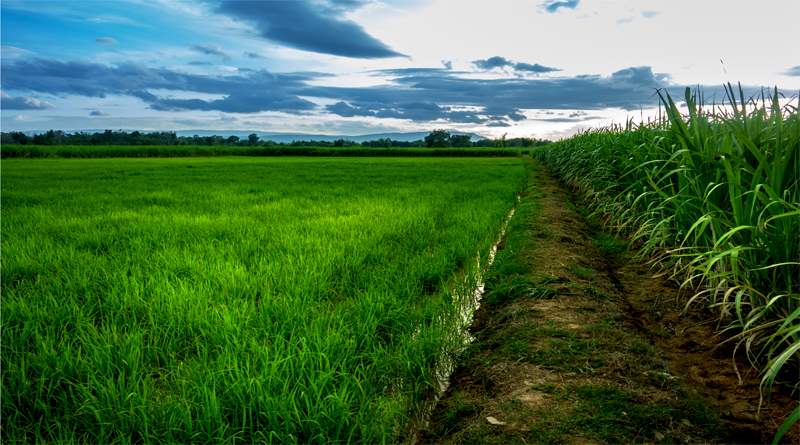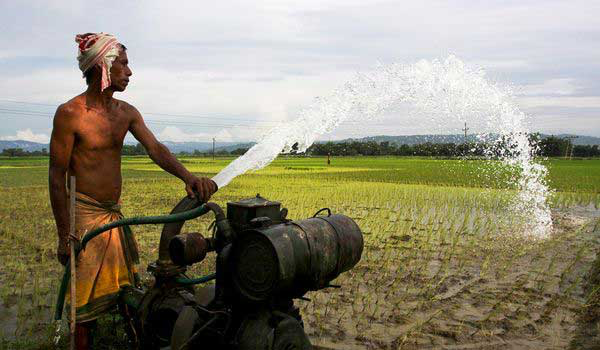Could PM Modi be prescribing a cut back On Rice & Sugarcane?


Even as pressure builds up on sugar consumption as a primary cause of diabetes, obesity and other healthcare challenges confronting India, comes a report that declares even the growing of sugarcane as an area worth relooking. A recent tweet by Prime Minister Modi, who has made an ambitious target to double farm incomes by 2022, could also be a possible pointer to a change in thinking at the central government at least.
Think about what you can do for water conservation in the villages. Every drop of water should be conserved: PM @narendramodi
— PMO India (@PMOIndia) April 24, 2018
The case for change is compelling.
India holds 4% of the worlds fresh water reserves for its 1.3 billion people. Almost 78% of the country’s fresh water reserves are dedicated towards agriculture, yet 52% of the country’s farms depend upon rainfall. India uses twice the amount of water used in China to grow crops, the extra water coming in mostly from relentless groundwater extraction, where we lead the world, and which is also pushing the country towards water stress.
It is inevitable that in order to ensure adequate drinking water for its citizens in the near future, India would need to improve its irrigation systems and crop management. Which is where Rice and sugarcane come in. More than 60% of the water available for agriculture goes into irrigating Rice and Sugarcane, two crops that only constitute 24% of the country’s gross cropped area. The reasons for this skewed skewed farming policies that have over a period of tie, completely distorted the agricultural market and become a political hot potato.
A recent study published by Ashok Gulati and Gayathri Mohan of Icrier titled “Towards Sustainable, productive and profitable agriculture: Case of Rice & Sugarcane” follows the repercussions of growing rice and sugarcane in states facing water shortages using water intensive irrigation techniques like “flood-irrigation”. (To read the full study click the link at the bottom of the article)
The report states how Punjab and Haryana, two states with high land productivity of rice actually fall behind eastern states like Bihar, UP, West Bengal or Assam when it comes to irrigation water productivity. In terms of numbers Punjab’s land productivity is at 3921 kg/ha as compared to Bengal’s 2802 kg/ha however in terms of economic water productivity, Bengal is at Rs.9.34 per cubic metre as compared to Punjab’s mere Rs.3.81. Similarly when you look at sugarcane, Maharashtra, Tamil Nadu and Karnataka are high in land productivity but sub-tropical regions like Bihar and UP are more suited to grow these crops in terms of economic water productivity.
Cultivating paddy in Punjab is an anomaly when seen from the lens of sustainable agriculture. As per the World Bank Report of 2010, Punjab’s water table index is falling at the rate of 70-120cm per year. It produces 19kg of rice per lakh litres of irrigation water as compared to Bihar that is able to produce 56kg for the same amount of water. However the state’s well-rounded procurement policy coupled with the highly subsidized rates of power make the profitability of paddy cultivation per hectare in Punjab very high. This tends to encourage farmers to grow this water intensive crop despite the depleting water tables of the state.
In a case similar to the paddy fields of Punjab, Maharashtra deflects 2/3 of its irrigation supplies towards growing Sugarcane, a crop that only constitutes 4% of the states gross cropped area. With an overall irrigation cover of 19% compared to the country’s 48% it is truly a paradox for state riddled with constant droughts to grow such a water intensive crop. Maharashtra though is home to major sugar mills with political influence and even ownership that ensure a market and profitability of these crops is maintained. This combined with the irrigation coverage for growing sugarcane pushes farmers of that region into growing this crop even when faced with extreme water shortages.
The issue of unstable agricultural water use in regions with completely different water ecologies brings to light the glaring mismanagement of water and the inability of the government both the state as well as centre to adopt changes in its policies for groundwater control and crop management.
Gulati-Mohan recommend shifting water intensive crops to water abundant regions. While this might be hard to do, they state how a balance must be maintained between the water scarce and water abundant states when it comes to the production of water intensive crops. Marketing opportunities for sugarcane in states like Bihar and UP must be strengthened by reviving the old sugar mills and potentially building new ones. The policies regarding the procurement of rice in water abundant states also need to be reviewed. Pricing water and electricity correctly to pump water in states like Punjab could add as an incentive for the farmers to grow crops like maize which are better suited for that region. These recommendations though necessary are time intensive and will take years to get implemented and reap benefits in terms of profits. It is, however easier to immediately implement better irrigation techniques, which could lead to less water wastage like drip irrigation. A technique which has an application efficiency of 65% or a water loss of 35%, in practice this would mean that drip irrigation on 1 ha of a sugarcane field can bring an additional 2.29 ha area under conventional irrigation.
It is time India looked away from land productivity as a factor for determining what crops to be grown and instead looked at the water productivity of a region. The agricultural sector has remained the same since the green revolution, for a country whose economy is driven by agriculture it is time the centre took a hard look and made changes for a more sustainable future.
Link For Icrier Report: click here
![]()




